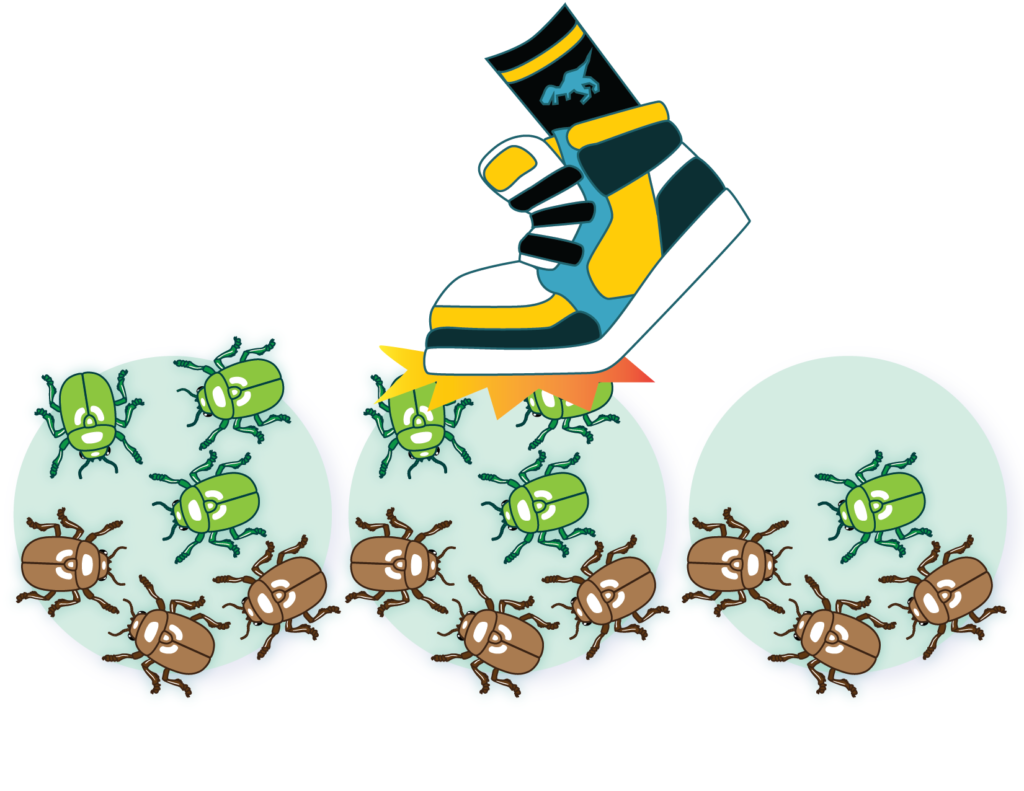Genetic drift is one of the basic mechanisms of evolution.
In each generation, some individuals may, just by chance, leave behind a few more descendants (and genes, of course!) than other individuals. The genes and other genetic elements of the next generation will be those of the “lucky” individuals, not necessarily the healthier or “better” individuals. That, in a nutshell, is genetic drift. It happens to ALL populations — there’s no avoiding the vagaries of chance.
Earlier we used this hypothetical cartoon. Genetic drift affects the genetic makeup of the population, but unlike natural selection, through an entirely random process. So although genetic drift is a mechanism of evolution, it doesn’t work to produce adaptations.
Read more about:
Teach your students about genetic drift:
- The natural selection game, a classroom activity for grades 9-12.
- Problem-based discussion: Simulations of genetic drift, a set of slides for the college level (PowerPoint download).
Reviewed and updated June, 2020.

